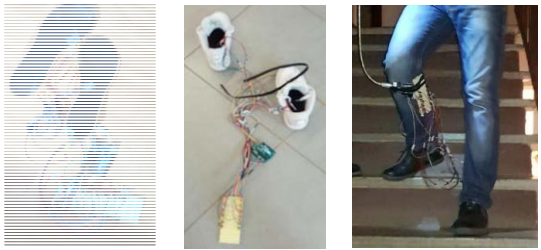3D printing has opened up new possibilities for people who suffer from the foot, joint and back problems that can come simply from standing or walking. Insoles can make a big difference to not only comfort but to the relief of chronic ailments. Typical store-bought insoles, however, may not be sufficient to correct posture problems and walking difficulties – which is why 3D printing has made such a difference. Companies are now employing 3D scanners to capture data about individual customers’ or patients’ feet, and that data is used to 3D print customized insoles that match the customers’ or patients’ exact anatomy and needs.
In a paper entitled “Researches on Using ABS Composite and Silicone to Build Insoles by 3D Printing,” author Mihaela Ioana Baritz of Transilvania University of Brasov discusses the fabrication of specialized insoles for patients with diabetes mellitus (DM). An estimated 25% of DM patients develop foot problems, and about 20% of patients entering the hospital because of foot problems are then admitted.
“Studies showed that complications of DM, such as changes in bony structures, limited joint mobility, callus formation, and arterial in sufficiency, may cause locally elevated plantar pressures,” explains Baritz. “Repeated applications of such high pressures make the foot more susceptible to the development of ulcers. Therefore, medical intervention through medicinal substances is beneficial to the patient and is a method of assessing both the pathology evolution and a method of improving the functional parameters of the posture or the walking cycle.”
Plantar fasciitis is another common problem, not necessarily among diabetic patients but among the general public, particularly more active people. The condition occurs in approximately two million Americans every year. Insoles can help with this condition as well, and Baritz describes an experimental setup in which the plantar surface is scanned to create a 3D model of an insole. The insoles were then 3D printed in a rigid material (ABS) with soft silicone surfaces that adhere to the insole surface and allow for the possibility of recording the dynamic response during walking, thanks to force sensors placed in them.
“In this experiment, it was made to emphasize the pressing force of the plantar surface of the left / right foot on the ground, in the situation where the subject is wearing or not appropriate footwear for the anthropometric dimensions,” Baritz concludes. “Also, the evaluation of the force of pressing on the ground was determined, in the second part of the experiment, at the same time with the help of the sensorial insoles mounted in the appropriate shoe, demonstrating the obtained values a similarity of the measurements. In addition, the 3D printing technology of manufacturing the rigid insoles, has enabled to obtain a personalized form of plantar support composite with silicone material. This form induces a much better postural comfort in the subject and allows for fast recordings made with a portable system.”
Discuss this and other 3D printing topics at 3DPrintBoard.com or share your thoughts below.
Subscribe to Our Email Newsletter
Stay up-to-date on all the latest news from the 3D printing industry and receive information and offers from third party vendors.
You May Also Like
Precision at the Microscale: UK Researchers Advance Medical Devices with BMF’s 3D Printing Tech
University of Nottingham researchers are using Boston Micro Fabrication‘s (BMF) 3D printing technology to develop medical devices that improve compatibility with human tissue. Funded by a UK grant, this project...
3D Printing Webinar and Event Roundup: April 21, 2024
It’s another busy week of webinars and events, starting with Hannover Messe in Germany and continuing with Metalcasting Congress, Chinaplas, TechBlick’s Innovation Festival, and more. Stratasys continues its advanced training...
3D Printing Webinar and Event Roundup: March 17, 2024
It’s another busy week of webinars and events, including SALMED 2024 and AM Forum in Berlin. Stratasys continues its in-person training and is offering two webinars, ASTM is holding a...
3D Printed Micro Antenna is 15% Smaller and 6X Lighter
Horizon Microtechnologies has achieved success in creating a high-frequency D-Band horn antenna through micro 3D printing. However, this achievement did not rely solely on 3D printing; it involved a combination...
































